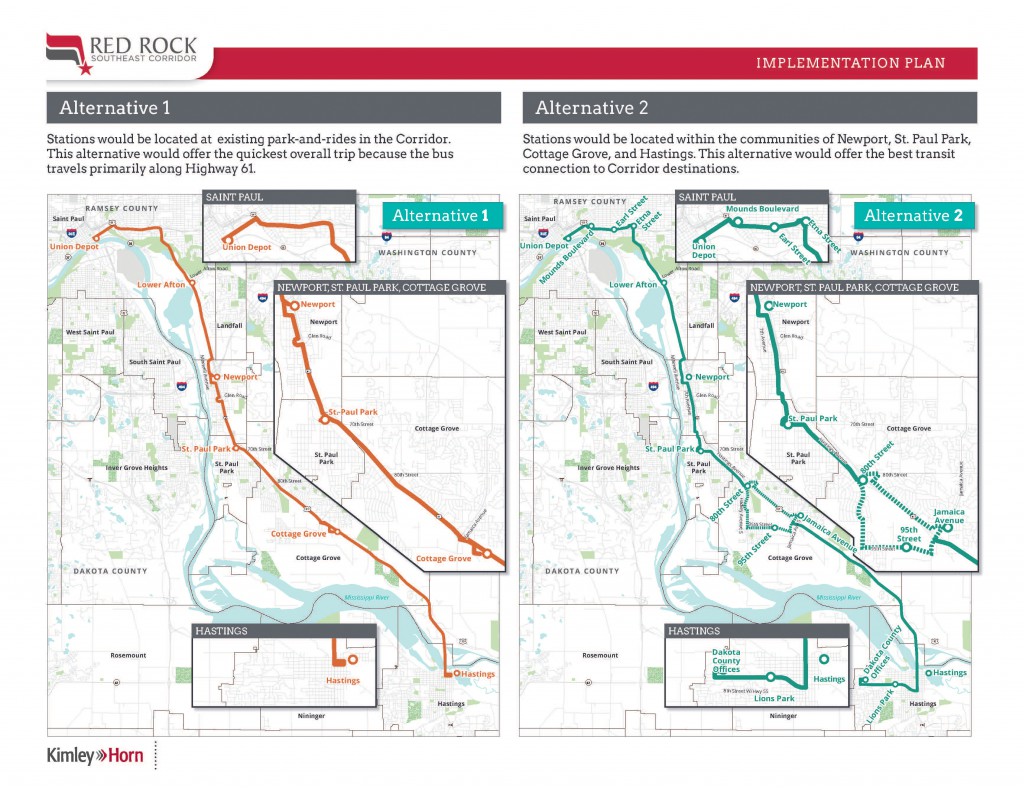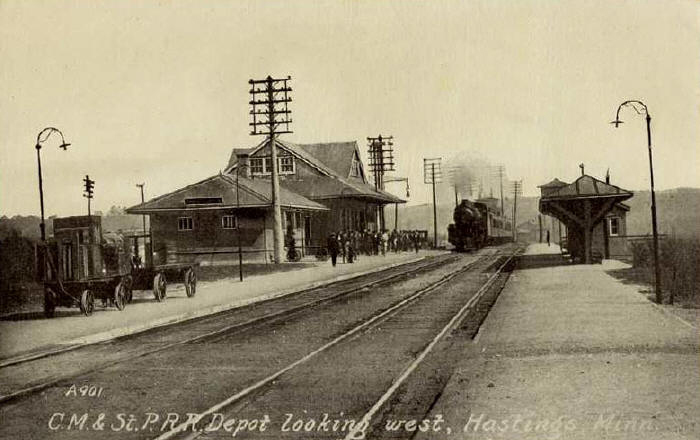Background
The Implementation Plan builds off of the 2007 Alternatives Analysis Study (AA) on the Red Rock Corridor performed by Washington, Dakota, Ramsey, and Hennepin Counties. The AA concluded that commuter rail was the most optimal long-term transit option for the corridor. The study also provided some near term recommendations like building transit ridership through expanded bus service along the corridor and helping to promote economic development throughout the corridor. Additional work was then completed on station area plans to help achieve that long-term vision towards commuter rail.
More recently, the Red Rock Corridor underwent an Alternatives Analysis Update (AAU) in 2014 that reviewed the findings from the 2007 study. While much of the AA recommendations were confirmed to still be optimal, the AAU identified a shorter-range implementation strategy that would help improve transit service in the corridor. Bus rapid transit (BRT) was identified as the alternative best able to improve accessibility and connectivity for corridor residents and businesses through all-day, bi-directional service.
Implementation Plan
The Implementation Plan process began in early 2015. The Implementation Plan followed the recommendations from the AAU to create financial, development, and service plans to lead towards the long-term goal of more transit service in the Red Rock Corridor.
At the onset of the Implementation Plan, it was noted that AAU-recommended routing with stations along Highway 61 may miss some of the established development along the corridor. Accordingly, a second BRT alternative was introduced to focus more on the existing density in the corridor that would be more likely to support all day transit service. The second alternative included stations on the east side of Saint Paul within the Gateway Corridor, into the developed part of Cottage Grove, and further into Hastings. St. Paul Park did not have a station in the routing recommended in the AAU, so a station in St. Paul Park was added to both alternatives. The two concepts can be seen below.
The comparison of the two alternatives shows that Alternative 2 provides more opportunities for transit service for the Red Rock Corridor. While Alternative 2 is more costly, it will service more jobs and generate almost twice as many new riders than Alternative 1. Alternative 2 offers the best transit connections to destinations within the corridor and creates the best option to implement all-day service.
The recommendations made in the Implementation Plan result from projected ridership, cost-effectiveness, potential for economic development, and input from the public. The Implementation Plan uses a phased approach presenting both near-term and long-term strategies and recommendations. Recommendations for the near term (Phase I), between 2016 and 2020, focus on increasing local and express bus service and building transit ridership. The plan contains multiple recommendations that include working with Metro Transit to maintain and increase corridor transit service. In addition to building ridership, another important near-term recommendation is to work with cities within the corridor to update their comprehensive plans with increased population and job densities within the station areas. These recommendations will help the corridor to move towards full BRT implementation.
Recommendations for the long term (Phase 2), between 2020 and 2040, focus on introducing BRT to the corridor after Phase I. This phase recommends implementing the corridor city and county comprehensive plans that were made with Red Rock BRT in mind and updating the forecasted ridership based on those updates. Other recommendations include monitoring ridership, continuing to invest in station area development and working with Metro Transit to maintain or increase service while monitoring the corridor for the best time to implement BRT service. Project background, recommendations and next steps as well as multiple appendices covering the more technical aspects of the study are also included in the Implementation Plan.
The final Implementation Plan is available for review.
Additional study materials including the technical memorandum are available here.
Corridor
Recent News Posts
- A New Vision for the Red Rock Corridor
- Red Rock Corridor Commission embarks on "Vision Refresh"
- Over 15,000 rides from Newport Transit Station to Minnesota State Fair
- Newport Transit Station to be 2017 State Fair park and ride
- Minneapolis Service Coming to Newport Transit Station






